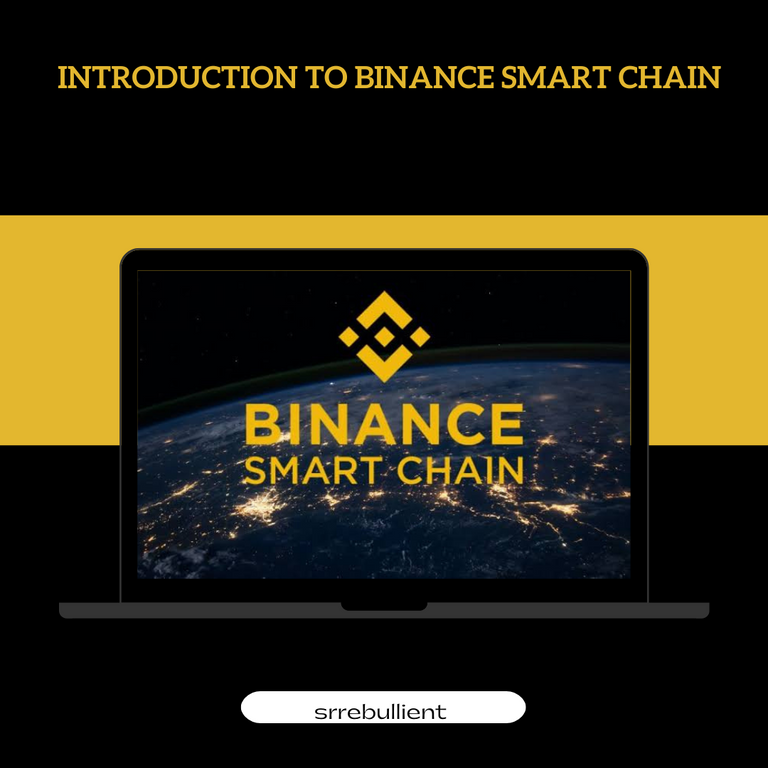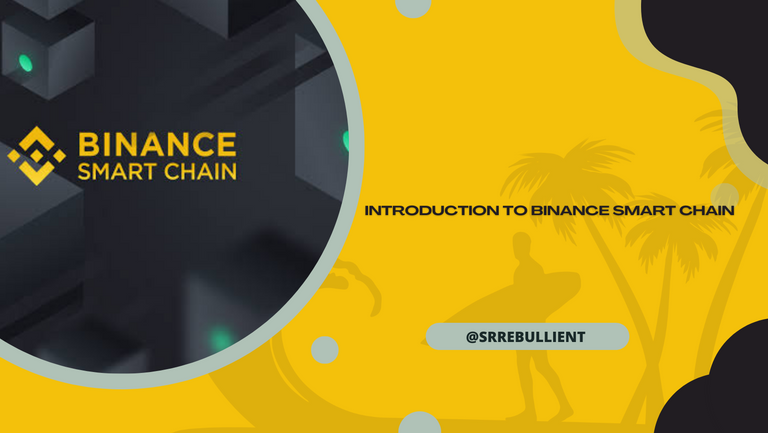
Hey guys,
Today, we will be looking into Binance Smart Chain and I believe most of us here are familiar with the term but probably don't know much about it.
Binance Chain, the home of the BNB currency, is a name you've probably heard of. It's built for lightning-fast trade. To do so, it had to make some compromises, one of which was that it wasn't as programmable as other blockchains.
Binance Smart Chain, a new blockchain with a full-featured ecosystem for developing high-performance decentralized applications, is here to change that. It was created to work with Binance Chain cross-chain to give users the best of both worlds.


In April of this year, Binance introduced Binance Chain. Its main goal is to make decentralized (or non-custodial) trading as quick as possible. Binance DEX, one of the nicest decentralized exchanges out there, is the largest decentralized application (or DApp) on it, which is somewhat unsurprisingly. You can utilize it through binance.org's online interface or through Trust Wallet's native integration.
However, due to the intrinsic limits of blockchain systems, the chain lacks flexibility — smart contracts in a system designed for quick trade could cause the network to become considerably clogged. CryptoKitties are a fun game to play. It brought the Ethereum blockchain to a complete halt at the height of its popularity.
One of the most difficult challenges facing blockchain development is scalability. That's where the Binance Smart Chain platform comes in.

The Binance Smart Chain (BSC) is a blockchain that exists alongside the Binance Chain. BSC, unlike Binance Chain, is Ethereum Virtual Machine compatible and supports smart contracts (EVM). This architecture was designed to keep Binance Chain's high throughput while also incorporating smart contracts into its ecosystem.
In essence, both blockchains are active at the same time. For layer two and off-chain, BSC is not a scaling option. It's a standalone blockchain that would continue to operate even if the Binance Chain went down.
BSC supports majority of Ethereum DApps because it is EVM compatible. This should make it simple for developers to migrate their projects from Ethereum to Bitcoin. It means that apps such as MetaMask may be easily setup to function with BSC, which is good news for users. To get started, check out one of my previous post on How to Use MetaMask for Binance Smart Chain.

- Consensus
To achieve 3 second block timings, Binance Smart Chain employs a Proof-of-Stake consensus method. Proof of Staked Authority (or PoSA) is a technique in which players stake BNB in order to become validators. Transaction fees from the transactions included in the block will be paid to them if they propose a genuine block.
Unlike many other protocols, BNB does not have a block subsidy for newly issued BNB since it is not inflationary. On the contrary, as the Binance team conducts frequent coin burns, the amount of BNB available decreases with time.
- Cross-chain compatibility
Binance Smart Chain was designed to be a stand-alone solution that works in tandem with the Binance Chain. Users can seamlessly move assets from one blockchain to another thanks to the dual-chain architecture. As a result, Binance Chain allows for fast trading while BSC allows for the creation of sophisticated decentralized apps. Users can access a vast ecosystem that can cater to a variety of use cases because to this interoperability.
BEP-2 and BEP-8 tokens from Binance Chain can be exchanged for BEP-20 tokens, the new Binance Smart Chain standard. Have you read ERC-20 Tokens: An Introduction? Then you're already aware with BEP-20's format.
The simplest way to move tokens from one chain to another (for example, BEP-2 to BEP-20 or vice versa) is to use the Binance Chain Wallet, which is available on Chrome and Firefox.
You may be aware that Binance Chain already supports a number of digital assets called "Peggy currencies," including BTC, LTC, ETH, EOS, and XRP. These are tokens that are tied to assets on their own native blockchains. You might elect to lock up 10 BTC in order to receive 10 BTCB on Binance Chain, for example. You can exchange your 10 BTCB for 10 BTC at any time, implying that the price of BTCB should closely resemble the price of native BTC. You are basically porting these assets to Binance Chain by doing so. Assets from a variety of chains can be utilised in the developing DeFi area because of the flexibility provided by Binance Smart Chain. Users can, for example, trustlessly exchange assets (similar to Uniswap), engage in yield farming, and vote on ideas using apps like PancakeSwap. BurgerSwap and BakerySwap are two efforts similar to this.

Binance smart chain has grown to become one of the best blockchain suitable for developing various decentralized applications. Although the blockchain is still new compared to the likes of Ethereum but it still hold awesome potential to be a target for various upcoming blockchain projects.